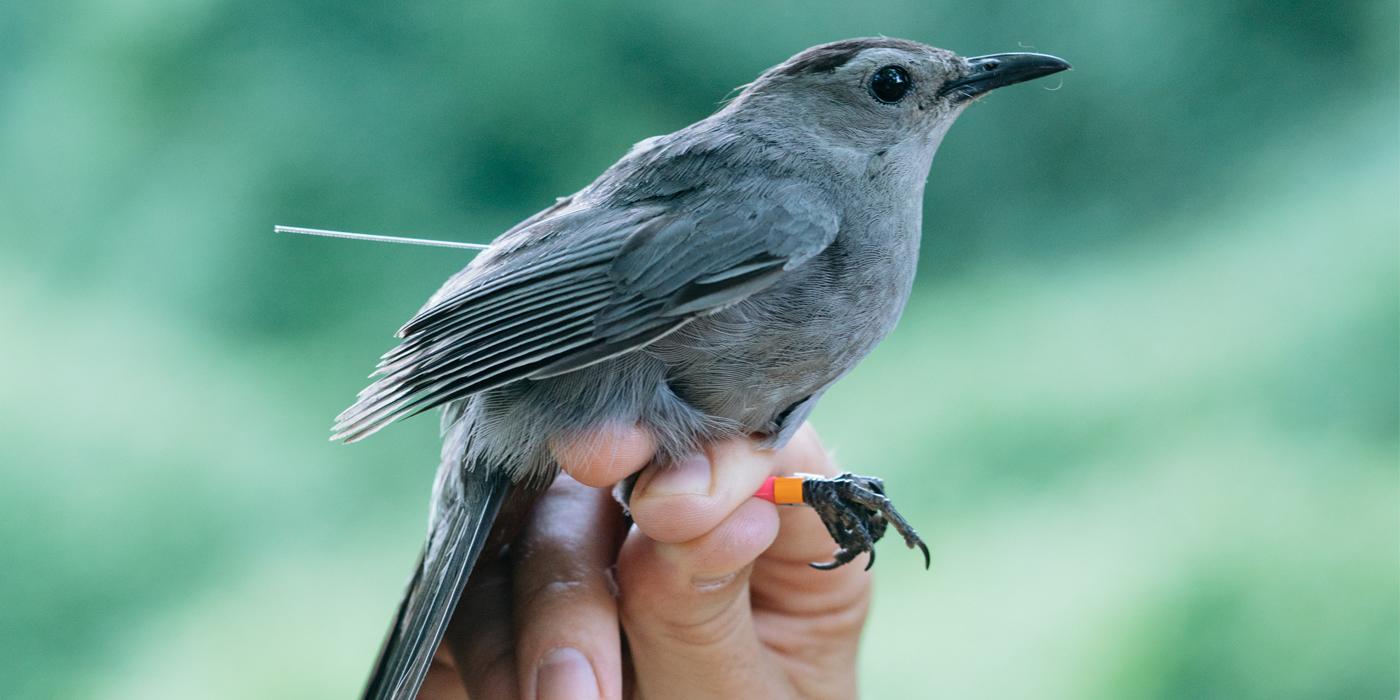Human-Modified Habitats Indirectly Influence Bird-Mating Patterns, Smithsonian Conservation Biology Institute Scientists Find
Birds provide one of the most common ways to encounter nature in cities, but few people wonder how their actions affect birds looking for love. A new study published in the journal Ecology and Evolution this month suggests that changes by people in suburban environments can affect the number of breeding pairs, their selection of a mate and even shape how a species evolves. The study tracked gray catbirds nesting in Washington, D.C.-area parks and in local backyards participating in a citizen science project called Neighborhood Nestwatch, which is run by the Smithsonian Conservation Biology Institute's Migratory Bird Center.
“When humans modify habitats, like in their own backyards or in cities, we are changing the canvas upon which evolution works,” said Pete Marra, one of the study's authors and an SCBI research scientist. “This paper provides evidence that evolutionary processes are likely changing right under our noses as we change habitats.”
Native birds are often faced with a variety of human-modified habitats and many species have adjusted to living in them, said Brandt Ryder, the study's lead author and a research ecologist at SCBI. Ryder expected to find that human modifications of habitat might influence mating patterns and the traits that are important in mate choice, such as feather color and body size. For example, parks, which are larger and feature contiguous habitat, might be more conducive to mating than backyards, which are often patchier and provide limited nesting habitat. The researchers found that an ecological factor—breeding density—influences both mating patterns and the evolution of male traits. They hypothesize that this is largely an effect of human-habitat modification.
Catbirds, like many other bird species that scientists consider “socially monogamous,” actually rely on a time-tested method for improving their reproductive success: they seek mating opportunities outside their social pair-bond. The researchers found that male catbirds that settled in areas with more breeding pairs had higher mating success because of these “extra” mating opportunities. That means that when humans cut down trees, build houses and take other actions that lower the density of bird populations, they can diminish reproductive opportunities and alter the course of evolution for specific traits.
“Through our actions, we're influencing their reproductive strategies,” Ryder said. “It's really important to think about how evolution plays out in human-dominated contexts because we know very little about it; scientists usually study evolution in ideal environments. In environments altered by humans, there is this inevitable cascade of ecological changes that can influence evolution.”
The Neighborhood Nestwatch program involves citizens in bird research from the comfort of their own backyards. Scientists visit the participants to band birds for identification purposes and train residents to observe and report bird behavior. Washington-area residents interested in joining the program can learn more on the Migratory Bird Center website.
In addition to Ryder and Marra, the paper's other SCBI author is Rob Fleischer, head of SCBI's Center for Conservation & Evolutionary Genetics. The other author on the paper is Greg Shriver from the Department of Entomology and Wildlife Ecology at the University of Delaware, Newark.
The Smithsonian Conservation Biology Institute plays a key role in the Smithsonian's global efforts to understand and conserve species and train future generations of conservationists. Headquartered at a Smithsonian facility in Front Royal, Va., SCBI facilitates and promotes research programs based at Front Royal, the National Zoo in Washington, D.C., and at field research stations and training sites worldwide.

